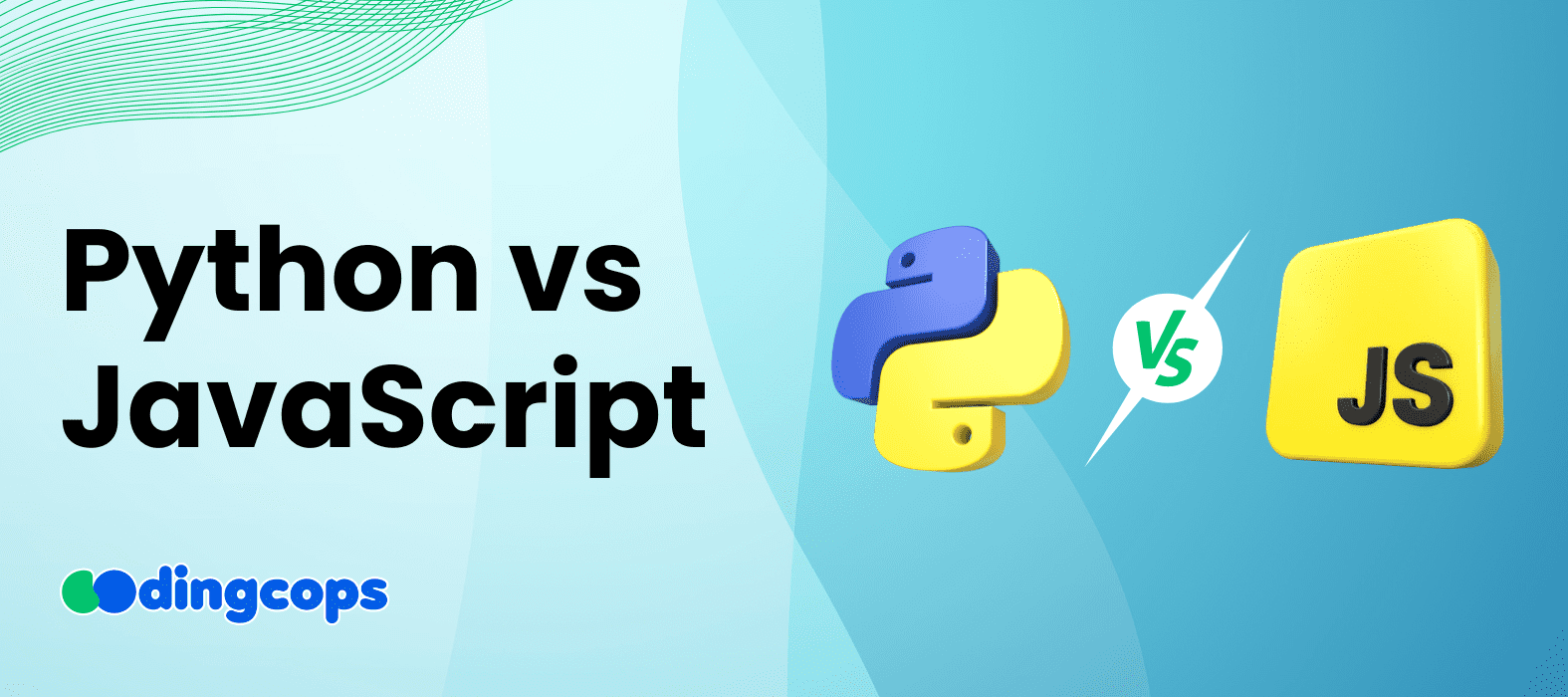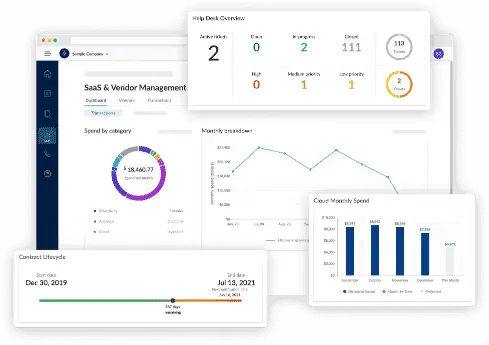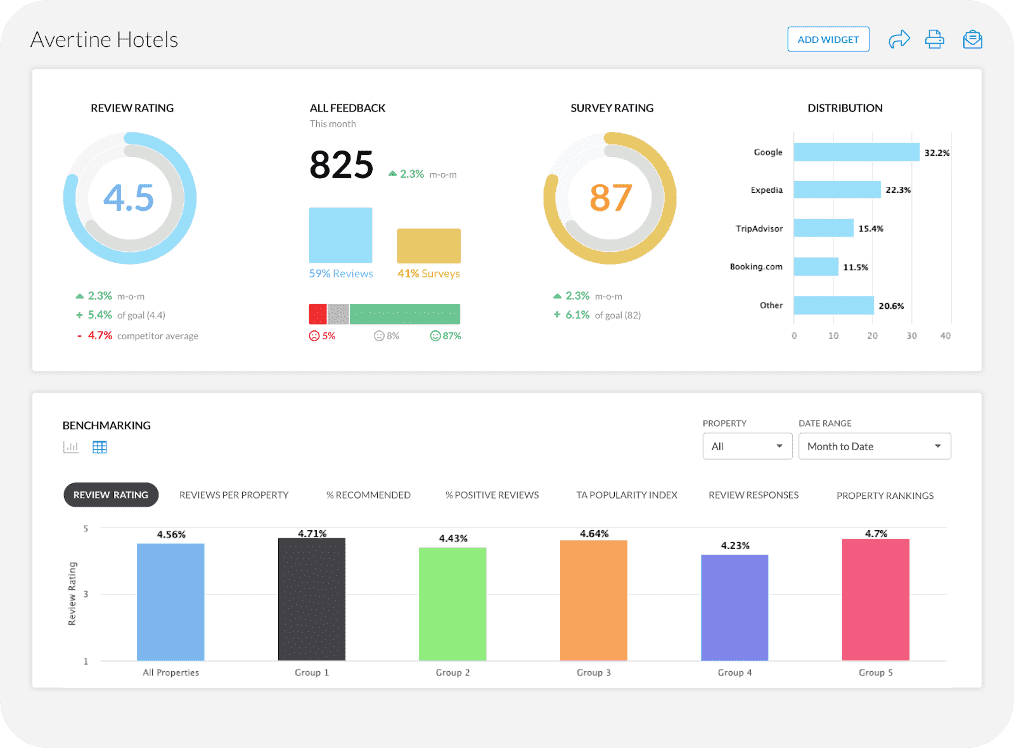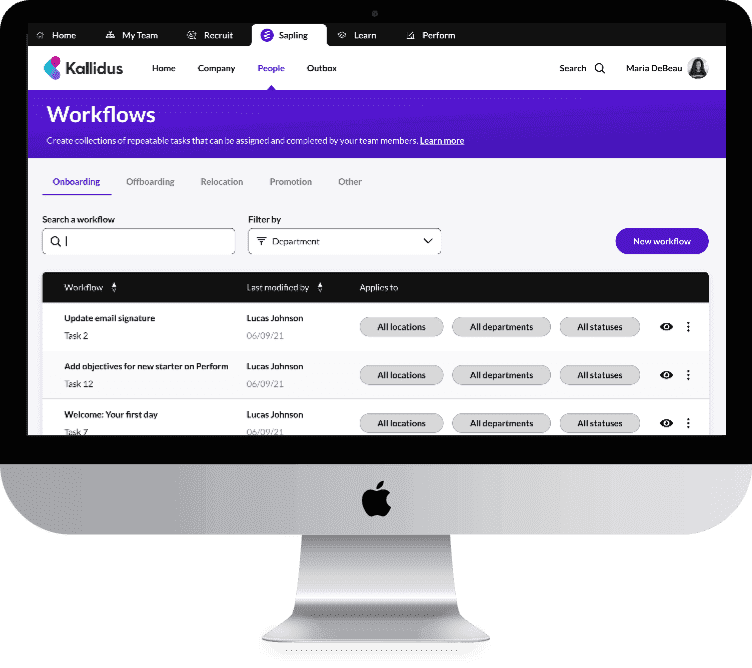Are you fed up with writing hundreds of lines of code? Do you want your fingers to rest? Don’t worry, we have the solution.
With the rapid changes in the tech industry, especially in software development, two game-changing approaches have come into play that have eased the development process. These two approaches are low-code and no-code platforms. These tools enable you to build applications yourself, as you don’t require seasoned programmers to create applications with speed and ease.
To begin with, low-code and no-code platforms allow you to build applications without any heavy coding. You use drag-and-drop or very little coding to design and deploy mobile or web applications efficiently. These platforms help you cope with the demand for hyper-automation and IT modernization.
On top of that, all sorts of businesses are in the race to digitize their processes and enhance customer experiences. Hence, to save time and achieve milestones quickly, business owners opt for low-code and no-code platforms. Notably, these platforms have become a vital asset for mobile and web development.
But what exactly are they?
What is the difference between low-code and no-code?
Is it reliable?
These would be some of your reservations or questions that need to be addressed. Therefore, in this comprehensive guide, we will explain the core concepts, enlighten you with core differences, and provide all other related information.
By the end of this guide, you’ll be able to decide which approach is good for your business or project.
So, let’s start!
What is a Low-Code Platform?
Low-code platforms are development environments that require very minimal coding skills. Such platforms allow users to build applications through a visual interface with very little coding.
The low-code platforms typically offer drag-and-drop tools, pre-built templates, and integration capabilities that not only speed up the development process but also lessen your workload.
In addition, these platforms are primarily for developers or users with some knowledge of coding. Worry not, as you can also write custom code in the low-code environment, which is proof of flexibility and control while working with such platforms.
Features of Low-Code Platforms
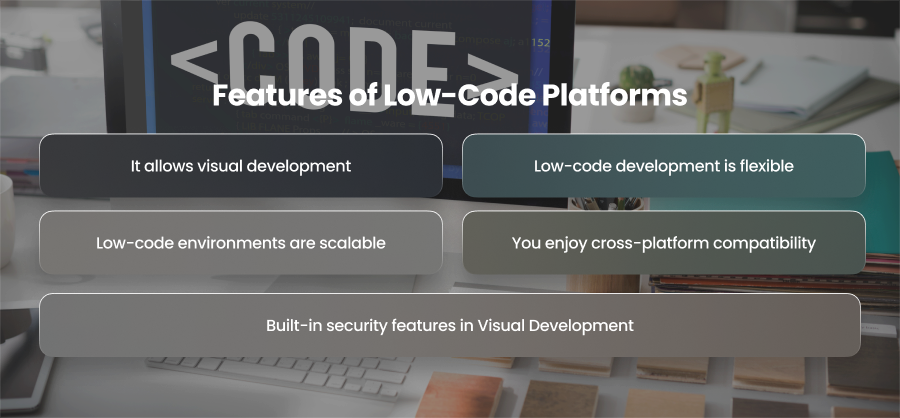
It allows visual development
Firstly, the low-code environment allows you to develop applications with minimal coding and maximum drag-and-drop. This is done by using templates, pre-built components, etc. Hence, with low-code programming, you can build most parts of your application visually.
Low-code development is flexible
That’s very right. Low-code development is flexible. It is flexible in a way that it accommodates developers to custom code, and write custom scripts or modules for handling specific functionalities. This feature supports you in writing intricate functionalities while enjoying building the rest of the application visually.
Low-code environments are scalable
Next, scalability is a crucial factor in using any development platform. While working with minimal-code programming, you don’t worry about scalability. Because such platforms are robust and capable enough to handle enterprise-level applications with massive amounts of data.
You enjoy cross-platform compatibility
In addition to the features, multiple low-code environments offer cross-platform accessibility. This means that developers can build applications which easily deployed and executed on various devices. This feature expands the reach of the application and makes it easily accessible.
Built-in security features in Visual Development
Yes, you read it very right. The visual development platforms usually come with built-in security features to ensure data security. Moreover, you also enjoy protection from potential threats with features like role-based access control and data encryption.
Do You Know?
Top 5 Low-Code Platforms
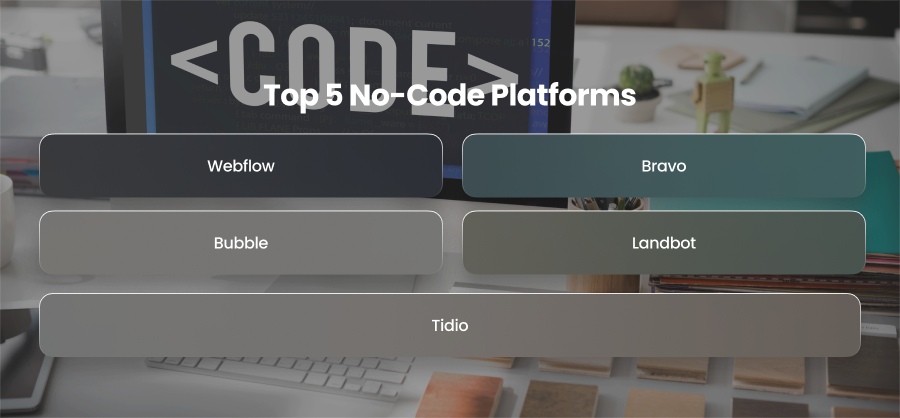
We have listed down the top 5 low-code tools for building applications. You may choose one that suits your requirements.
- OutSystems
- Appian
- Mendix
- Salesforce Platform
- QuickBase
What is a No-Code Platform?
On the other hand, we have no-code platforms. These platforms are designed for people with little to no experience in coding. Using these platforms, you get to have a complete visual development environment. This means applications are built using pre-configured modules, components, and workflows.
No-code environments are typically used for simpler, less complex applications such as internal tools, forms, dashboards, and workflow automation.
Features of No-Code Platforms
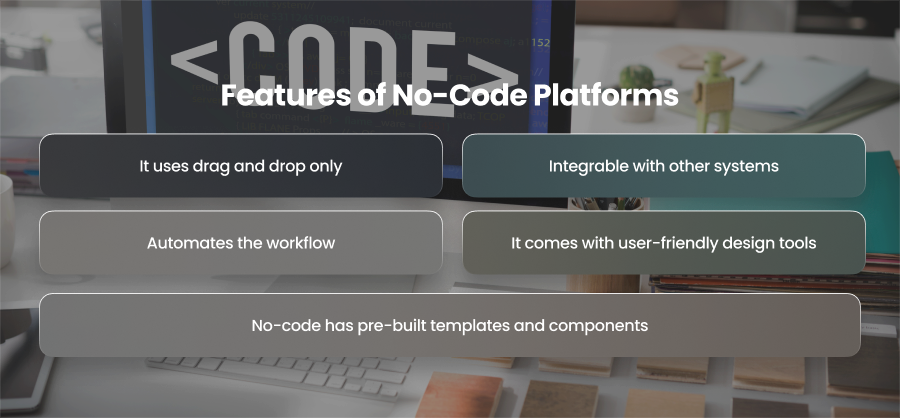
It uses drag and drop only
With no-code platforms, you can build visual interfaces using drag-and-drop tools. This makes it easier for users to build applications without writing code.
Using such platforms, there is no need for coding, as developers utilize a structural layout for building applications by simply dragging and dropping various components.
No-code has pre-built templates and components
The no-code platforms come with ready-to-use templates and components, which makes the development easier. It is easier for a layman to start building an application from scratch using pre-built things such as login pages, dashboards, or contact forms.
Automates the workflow
While working with zero-code platforms, you enjoy tools that automate repetitive tasks and streamline business processes. This means people building apps with no-code tools can automate various tasks without any need for code.
It comes with user-friendly design tools
Such platforms include pre-built tools for designing. These tools help customize the application to enhance its look and feel without any need for HTML and CSS.
Integrable with other systems
Lastly, codeless app builders allow their users to integrate with external systems, APIs, and databases effortlessly to enhance their work capabilities. Moreover, this feature enables them to connect and automate various tasks within their existing infrastructure.
Do You Know?
A study in 2024 stated that by 2025, 70% of new business applications will be built using low/no-code platforms.
Top 5 No-Code Platforms
Now it’s time to unfold the top 5 no-code development tools that let you build top-notch applications without writing a single line of code. Here are our top 5 choices:
- Webflow
- Bravo
- Bubble
- Landbot
- Tidio
Low-Code vs No-Code – The Core Differences

Seriously, some people are really stuck on making the right choice for their project. They are not able to decide between no-code and low-code platforms. You will later thank CodingCops for helping you make the right decision.
In this section, we will discuss the core differences between both platforms to assist in choosing the right tool for application development.
Before we dive into the differentiation, it is important to state that both approaches overlap in many features despite considerable differences.
Intended User Base
Let’s consider low-code tools first. These tools or platforms are built to support professional developers, which makes them avoid repeated tasks while allowing them to focus more on complex aspects of development. Moreover, it automates many processes that enhance work efficiency and speed up the development process.
On the other hand, no code app builders target business owners with vast domain knowledge, with no ability to code. It enables them to build applications using drag-and-drop.
Speed
The low-code platforms demand more training and time to onboard, develop, and deploy as they come with various customization opportunities. However, it is still faster than traditional development environments.
While no-code tools are highly configurable. All you need to do is plug-and-play, which takes no to very little time to build an application compared to low-code. Further, the testing is easier, and it also takes less time with no errors occurring due to no manual coding.
Integration of Applications
While building software applications, there comes a time when you need to integrate data from various platforms. Low-code platforms usually support excellent system integration.
Talking about integration capabilities for no-code platforms, they frequently fall short in this area.
Open vs Closed Systems
Low-code is referred to as an open system by being flexible enough to extend functionality via code. Hence, this proves that low-code technologies are flexible and promote better reusability.
Contrary to low-code, no-code platforms are closed systems. Such systems can only be extended via templated feature sets. This means there will be fewer use cases of no-code and access to boilerplate plugins and integrations.
Targeted Applications
Low-code and no-code platforms are both used to create business applications for internal use. However, the difference lies in what they are building and for what purpose.
Low-code comes with the ability to customize via manual coding, along with drag-and-drop. This makes it a feasible choice for high-demand applications important for business operations. On the other hand, no-code applications are for minor business problems, and they have no facility for customization.
Low Code vs No Code – A Quick Rundown of Differences
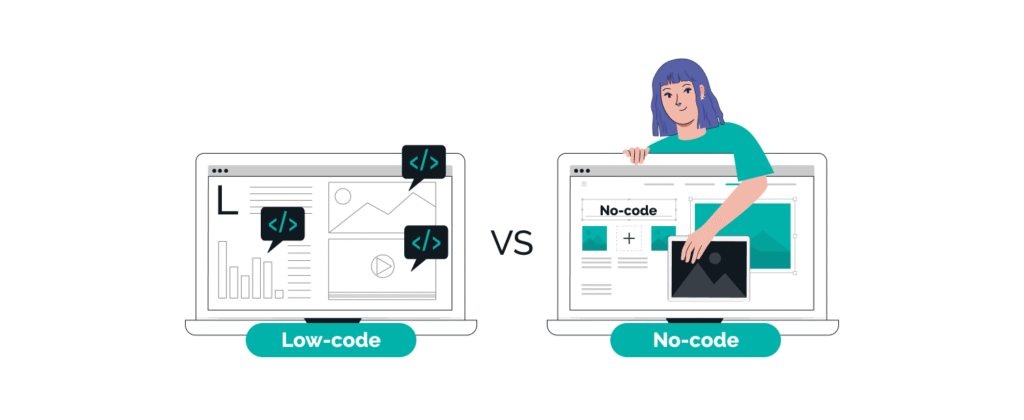
| Features | Low-Code | No-Code |
| Target Users | Developers | Layman, Business users |
| Primary Objective | Enhance the development speed | Promotes easy development |
| Coding Requirement | One can code according to requirements | No coding option |
| Flexibility | Flexible for complex and large business applications | Best for small business applications |
| Development Speed | Fast development | Fast development |
| Integration Capability | Can integrate with various systems using APIs and connectors | Limited integration |
When to Use Low-Code Platforms?
Low-code platforms shine where there is a need for complex or large applications with customizations. Let’s get into a little more detail for choosing low-code platforms.
Choose a low-code system when:
- You have to build large-scale applications with complex workflows, business logic, and integration with other systems.
- There is a need for creating a custom CRM or ERP system, followed by customizations.
- You want to automate repetitive tasks and processes.
- Developers want to rebuild or modernize the outdated system with a more efficient and less risky one.
When to Use No-Code Platforms?
No-code platforms are best to use when there are no complex requirements and you want speed and simplicity without the need for writing any code.
Hence, one should opt for no-code platforms when:
- You need to develop an internal system, such as for HR, marketing, or finance teams.
- Startups are short of resources, they can use no-code environments to test their ideas and receive feedback.
- You only want to build landing pages or websites with no development skills.
- You want to assist users with repetitive tasks across multiple applications without needing to code.
Can Low-Code and No-Code Work Together?
Yes, low-code and no-code platforms can work together, and many organizations use both approaches in tandem. This hybrid approach enables you to achieve maximum development speed without compromising control. Moreover, it allows developers to focus more on complex business operations and value-driven initiatives.
Final Verdict
So, we sum up our debate for today regarding low-code and no-code platforms. The idea was to make our audience aware of easy development strategies with no to very little coding. Both approaches excel in their given departments, furnishing accessible, faster, and cost-effective solutions.
However, you must be clear and careful about your requirements while choosing the approach. One should go for low-code if their project has complex integrations or logic, or wants more control over architecture and stability. Otherwise, no-code is always good for non-technical people and is the best solution when you require a simple app.




